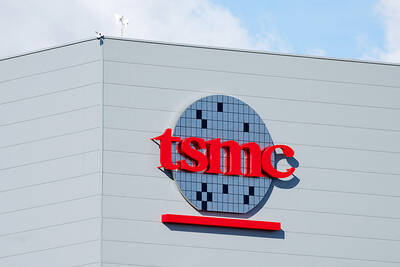Sales of personal digital assistants (PDAs) by the nation's top ma-nufacturers have been on the rise since the Computex Taipei computer trade show was held early last month, four companies said yesterday. Tough competition may however prompt factories to move to China to lower costs.
"We did see a lot of interest [at Computex]. There was one order from Central America for our non-bluetooth enabled PDA," said Alex Sharp, a marketing specialist at First International Computer Inc (
According to Justine Liu (劉宜君), spokeswoman at Mitac International Corp (神達電腦), their latest PDA offering, the Mio, is expected to land, "a couple of major orders." Customer interest has been so hot that the firm is hiring new R&D engineers with wireless-communications and PDA-design experience.
Asustek Computer Inc (華碩電腦) and Compal Electronics Inc (仁寶電腦) also reported increased attention for their PDA devices. All four of the Taiwanese firms offer products that only run on Microsoft's Windows operating system for handhelds, the largest competitor to the world number one Palm operating system.
These companies also said pressure has been building on them to transfer PDA production to China in order to pare costs.
"There is a price war starting and margins are already being cut. Everybody is moving manufacturing to China for low-cost production," said an Asustek manager who requested anonymity.
Mitac still produces its PDAs in Taiwan, but Liu said that could soon change.
"We are thinking of moving [PDA] production to the Kunshan Industrial Park (昆山工業區) in Shanghai and we are building a factory and assembly line in Kunshan that should be completed within six months -- but we do not know yet when we will move," she said.
The company already operates a PDA software-development center in Shanghai where it employs 200 software engineers, to the detriment of the Taiwan government's plan to build knowledge-based industries in Taiwan. The government has made software, semiconductors, biotechnology and TFT-LCD panels the four key industries of Taiwan's economic future.
At First International, executives said PDA production might migrate to China in the long run, but their PDA production will remain in Taiwan until Chinese factories are modernized.
"Manufacturing [PDAs] is very difficult and factories in China do not have the know-how to make this product. At First International we have manufactured other products, like motherboards and notebook [PCs] in China, but we make our PDA and all [Internet appliance] products in Taiwan," said Angela Wu (吳佩蓉), assistant supervisor of the networking and information marketing department.
Wu said the supply of parts is not a factor in determining whether or not to move operations to China as there are ample parts suppliers in both countries and components can be shipped between the two economies.
Market research firm Dataquest has said PDA sales will rise 18 percent from last year to 15.5 million units. Spending on the devices will rise by more than 20 percent to US$4.6 billion this year as color displays, telephony and other features that command higher prices catch on.

Taiwan Semiconductor Manufacturing Co (TSMC, 台積電) secured a record 70.2 percent share of the global foundry business in the second quarter, up from 67.6 percent the previous quarter, and continued widening its lead over second-placed Samsung Electronics Co, TrendForce Corp (集邦科技) said on Monday. TSMC posted US$30.24 billion in sales in the April-to-June period, up 18.5 percent from the previous quarter, driven by major smartphone customers entering their ramp-up cycle and robust demand for artificial intelligence chips, laptops and PCs, which boosted wafer shipments and average selling prices, TrendForce said in a report. Samsung’s sales also grew in the second quarter, up

LIMITED IMPACT: Investor confidence was likely sustained by its relatively small exposure to the Chinese market, as only less advanced chips are made in Nanjing Taiwan Semiconductor Manufacturing Co (TSMC, 台積電) saw its stock price close steady yesterday in a sign that the loss of the validated end user (VEU) status for its Nanjing, China, fab should have a mild impact on the world’s biggest contract chipmaker financially and technologically. Media reports about the waiver loss sent TSMC down 1.29 percent during the early trading session yesterday, but the stock soon regained strength and ended at NT$1,160, unchanged from Tuesday. Investors’ confidence in TSMC was likely built on its relatively small exposure to the Chinese market, as Chinese customers contributed about 9 percent to TSMC’s revenue last

With this year’s Semicon Taiwan trade show set to kick off on Wednesday, market attention has turned to the mass production of advanced packaging technologies and capacity expansion in Taiwan and the US. With traditional scaling reaching physical limits, heterogeneous integration and packaging technologies have emerged as key solutions. Surging demand for artificial intelligence (AI), high-performance computing (HPC) and high-bandwidth memory (HBM) chips has put technologies such as chip-on-wafer-on-substrate (CoWoS), integrated fan-out (InFO), system on integrated chips (SoIC), 3D IC and fan-out panel-level packaging (FOPLP) at the center of semiconductor innovation, making them a major focus at this year’s trade show, according

DEBUT: The trade show is to feature 17 national pavilions, a new high for the event, including from Canada, Costa Rica, Lithuania, Sweden and Vietnam for the first time The Semicon Taiwan trade show, which opens on Wednesday, is expected to see a new high in the number of exhibitors and visitors from around the world, said its organizer, SEMI, which has described the annual event as the “Olympics of the semiconductor industry.” SEMI, which represents companies in the electronics manufacturing and design supply chain, and touts the annual exhibition as the most influential semiconductor trade show in the world, said more than 1,200 enterprises from 56 countries are to showcase their innovations across more than 4,100 booths, and that the event could attract 100,000 visitors. This year’s event features 17